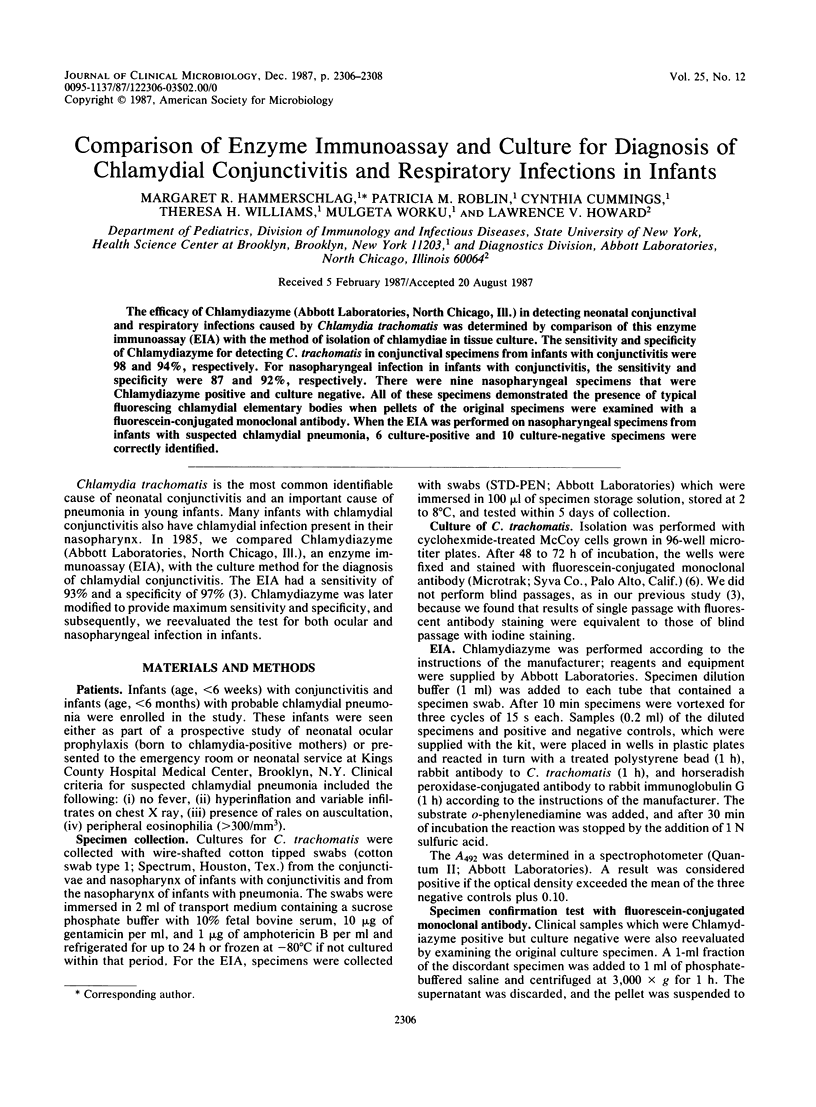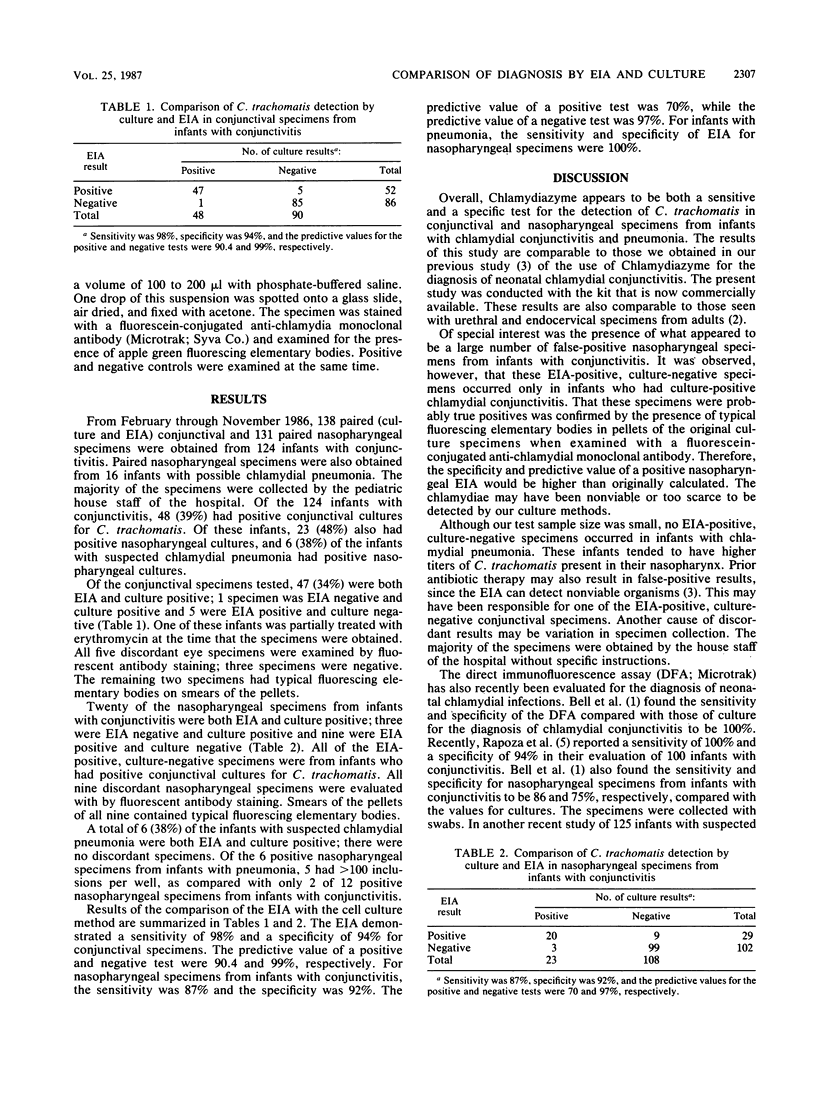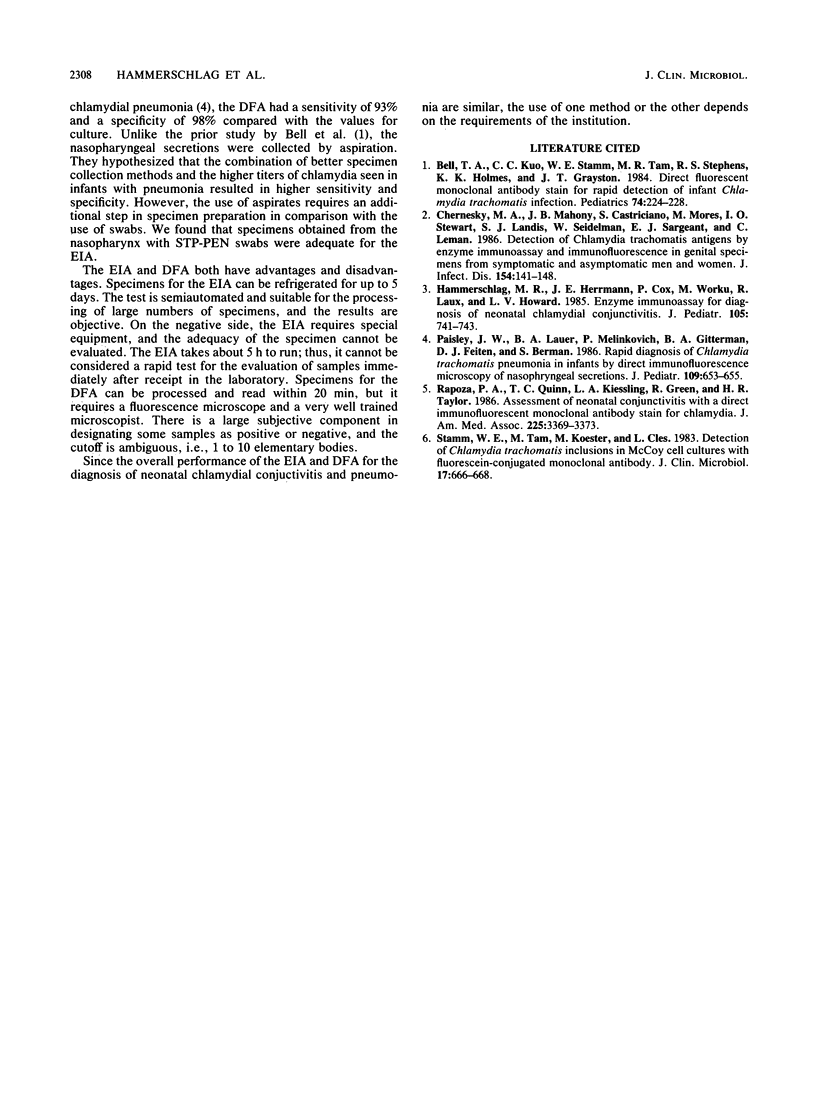Abstract
The efficacy of Chlamydiazyme (Abbott Laboratories, North Chicago, Ill.) in detecting neonatal conjunctival and respiratory infections caused by Chlamydia trachomatis was determined by comparison of this enzyme immunoassay (EIA) with the method of isolation of chlamydiae in tissue culture. The sensitivity and specificity of Chlamydiazyme for detecting C. trachomatis in conjunctival specimens from infants with conjunctivitis were 98 and 94%, respectively. For nasopharyngeal infection in infants with conjunctivitis, the sensitivity and specificity were 87 and 92%, respectively. There were nine nasopharyngeal specimens that were Chlamydiazyme positive and culture negative. All of these specimens demonstrated the presence of typical fluorescing chlamydial elementary bodies when pellets of the original specimens were examined with a fluorescein-conjugated monoclonal antibody. When the EIA was performed on nasopharyngeal specimens from infants with suspected chlamydial pneumonia, 6 culture-positive and 10 culture-negative specimens were correctly identified.
Full text
PDF


Selected References
These references are in PubMed. This may not be the complete list of references from this article.
- Bell T. A., Kuo C. C., Stamm W. E., Tam M. R., Stephens R. S., Holmes K. K., Grayston J. T. Direct fluorescent monoclonal antibody stain for rapid detection of infant Chlamydia trachomatis infections. Pediatrics. 1984 Aug;74(2):224–228. [PubMed] [Google Scholar]
- Chernesky M. A., Mahony J. B., Castriciano S., Mores M., Stewart I. O., Landis S. J., Seidelman W., Sargeant E. J., Leman C. Detection of Chlamydia trachomatis antigens by enzyme immunoassay and immunofluorescence in genital specimens from symptomatic and asymptomatic men and women. J Infect Dis. 1986 Jul;154(1):141–148. doi: 10.1093/infdis/154.1.141. [DOI] [PubMed] [Google Scholar]
- Hammerschlag M. R., Herrmann J. E., Cox P., Worku M., Laux R., Howard L. V. Enzyme immunoassay for diagnosis of neonatal chlamydial conjunctivitis. J Pediatr. 1985 Nov;107(5):741–743. doi: 10.1016/s0022-3476(85)80404-2. [DOI] [PubMed] [Google Scholar]
- Paisley J. W., Lauer B. A., Melinkovich P., Gitterman B. A., Feiten D. J., Berman S. Rapid diagnosis of Chlamydia trachomatis pneumonia in infants by direct immunofluorescence microscopy of nasopharyngeal secretions. J Pediatr. 1986 Oct;109(4):653–655. doi: 10.1016/s0022-3476(86)80232-3. [DOI] [PubMed] [Google Scholar]
- Rapoza P. A., Quinn T. C., Kiessling L. A., Green W. R., Taylor H. R. Assessment of neonatal conjunctivitis with a direct immunofluorescent monoclonal antibody stain for Chlamydia. JAMA. 1986 Jun 27;255(24):3369–3373. [PubMed] [Google Scholar]
- Stamm W. E., Tam M., Koester M., Cles L. Detection of Chlamydia trachomatis inclusions in Mccoy cell cultures with fluorescein-conjugated monoclonal antibodies. J Clin Microbiol. 1983 Apr;17(4):666–668. doi: 10.1128/jcm.17.4.666-668.1983. [DOI] [PMC free article] [PubMed] [Google Scholar]


